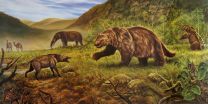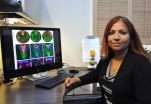(Press-News.org) PROVIDENCE, R.I. [Brown University] -- If decades of effort to bring more underrepresented minority students into science, technology, engineering and mathematics (STEM) fields were considered a grand chemistry experiment, then the modest results would suggest that while the formula may not be wrong, it may well be incomplete, according to a new article in the journal CBE-Life Sciences Education.
"I don't necessarily want to say that we've been doing it wrong all along, it's just that there are other ideas we can bring in," said lead author Andrew G.Campbell, a Brown University biology professor who develops and studies programs to recruit and retain underrepresented minority (URM) students to STEM.
Specifically what's been missing, Campbell said, has been the unfettered input of URM students. To begin to remedy that, he and his co-authors elicited the views of 50 URM students at a weekend retreat in Woods Hole, Mass., that they organized earlier this year.
"We didn't just sit down and design a survey and say, 'This is a good question to ask'," Campbell said. Surveys run the risk of bearing the biases of those who design them. Open-ended peer dialogue, the authors reasoned, would be more authentic.
Given that wide latitude, the students identified eight major themes that they said would improve their STEM training and career pursuits.
The students -- mostly undergraduates, but ranging up to postdocs -- hailed from Brown, Harvard University, Morgan State University, Northeastern University, Tufts University, the University of Massachusetts-Boston, Cornell University, the University of Buffalo, LaGuardia Community College, Pine Manor College, the College of Mount St. Vincent, the University of Michigan, Arizona State University, the Universidad Metropolitana, and Elizabeth City State University.
Eight ideas
The eight ideas reflect desires both for more pragmatic advice and deeper senses of connection and social meaning regarding the subject matter. Students suggested:
Including a social justice component in STEM education. For example considering biomedical research in the context of health disparities.
Training to help them better explain science to nonscientists, including family members who may be generally supportive but aren't always familiar with research.
Connecting STEM with other disciplines, including the humanities and the arts.
Learning sooner than well into graduate school about the career paths that become available with an advanced STEM degree.
Gaining guidance for achieving work-life balance. Older students may need this for child care, but even undergraduates may need it because they maybe helping to raise siblings or supporting other family members.
Reconsidering evaluation metrics that fail to account for the diversity or that reflect a misunderstanding of cultural differences.
Ensuring access to "invested mentors," who show a genuine interest in their careers.
Creating more opportunities for ancillary training, including parallel graduate degree programs, that allow for studies to evolve with changing or broadening interests.
Many of the themes students voiced are not unique to their URM status, Campbell acknowledged, but he said he was struck that students harbored some of the concerns -- including a need for work-life balance or career path advice -- so early in their academic careers.
Improving programs
Campbell and his co-authors plan to convene another retreat next year with 100 students to expand upon the themes in the paper, for instance to see if they hold up with a different and larger group. Campbell also hopes to learn from students at different stages in their academic or professional career why they've made the choices they have.
The data, stories and ideas he gathers can then be applied to shoring up that incomplete proverbial chemistry formula for successfully engaging URM students in STEM fields.
But Campbell said he doesn't have to look far to find examples of already working, implemented programs that could serve as models for helping students in many of the eight ways they said they need.
At Brown, for example, the open graduate curriculum allows students to pursue a masters degree in one field, (e.g., public health) after enrolling in doctoral studies (e.g., pathobiology). Meanwhile in the https://news.brown.edu/articles/2013/03/diversity, students take noncredit minicourses to help them gain more familiarity with research, Campbell said, but such minicourses could also be developed to address concerns such as science careers or social justice.
"You don't need an entire class or an entire semester to inform students," Campbell said. "You can design things like modules where students can learn about various options."
Meanwhile, at the Rhode Island School of Design, the paper notes, the STEM to STEAM program has produced many good ideas on how to better connect the sciences and the arts and design.
INFORMATION:
In addition to Campbell, the paper's other authors are Rachel Skvirsky of UMass-Boston; Henry Wortis of Tufts; Sheila Thomas and Ichiro Kawachi of Harvard; and Christine Hohmann of Morgan State.
The National Institutes of Health funded the research (grants including R13GM106577 and R25GM083270).
Turn on any local TV weather forecast and you can get a map of where skies are blue or cloudy. But for scientists trying to figure out how clouds affect the Earth's environment, what's happening inside that shifting cloud cover is critical and hard to see.
To investigate the layers and composition of clouds and tiny airborne particles like dust, smoke and other atmospheric aerosols, , scientists at NASA's Goddard Space Flight Center in Greenbelt, Maryland have developed an instrument called the Cloud-Aerosol Transport System, or CATS. The instrument, which launches to ...
NASA's Hurricane and Severe Storms Sentinel, or HS3, mission investigated four tropical cyclones in the 2014 Atlantic Ocean hurricane season: Cristobal, Dolly, Edouard and Gonzalo. The storms affected land areas in the Atlantic Ocean Basin and were at different stages during the investigations.
The HS3 mission pilots flew a remotely piloted Global Hawk aircraft over Cristobal, Dolly, and Edouard and flew a manned WB-57 aircraft over Gonzalo. During the flights, Cristobal transitioned from a hurricane into an extra-tropical storm. Edouard strengthened from a tropical storm ...
December 1, 2014 --Years after the end of the Great Recession, child poverty remains widespread in America's largest cities. A paper just released by the National Center for Children in Poverty (NCCP), a research center based at Columbia University's Mailman School of Public Health, reports that nearly three children in five living in Detroit are poor, according to the most recent Census figures. This rate has grown by 10 percentage points since the onset of the Great Recession in 2007.
Most children in Cleveland and Buffalo also live in poverty, as do nearly half ...
West Orange, NJ. December 1, 2014. Kessler Foundation researchers have authored a new article that provides insight into the variable impact of traumatic brain injury (TBI) on long-term memory. The article, "Working memory capacity links cognitive reserve with long-term memory in moderate to severe TBI: a translational approach," was epublished ahead of print on October 7 in the Journal of Neurology (10.1007/s00415-014-7523-4). The authors are Joshua Sandry, PhD, John DeLuca, PhD, and Nancy Chiaravalloti, PhD, of Kessler Foundation. This study was supported by grants ...
WASHINGTON (Dec. 1 2014) -- For patients in cardiac arrest, administering epinephrine helps to restart the heart but may increase the overall likelihood of death or debilitating brain damage, according to a study published today in the Journal of the American College of Cardiology.
The study offers new data in an ongoing debate over the risks and benefits of using epinephrine to treat cardiac arrest, an often-fatal condition in which the heart stops beating. Epinephrine, also known as adrenaline, is a hormone that stimulates the heart and promotes the flow of blood. ...
Give therapists and psychiatrists information about the biology of a mental disorder, and they have less -- not more -- empathy for the patient, a new Yale study shows.
The findings released Dec. 1 in the Proceedings of the National Academy of Sciences, challenge the notion that biological explanations for mental illness boost compassion for the tens of millions of Americans who suffer from mental-health problems.
Conventional wisdom suggests that biological explanations for psychiatric symptoms should reduce the blame patients receive for their behavior by making ...
Existing age estimates of American mastodon fossils indicate that these extinct relatives of elephants lived in the Arctic and Subarctic when the area was covered by ice caps--a chronology that is at odds with what scientists know about the massive animals' preferred habitat: forests and wetlands abundant with leafy food. In a paper published this week in the Proceedings of the National Academy of Sciences, an international team of researchers is revising fossil age estimates based on new radiocarbon dates and suggesting that the Arctic and Subarctic were only temporary ...
RIVERSIDE, Calif. - Multiple sclerosis (MS), an autoimmune disease of the brain and spinal cord, affects about 2.3 million people worldwide (400,000 in the United States). Affecting more women than men, it can be seen at any age, although it is most commonly diagnosed between the ages of 20 and 40.
An unpredictable disease that disrupts the flow of information within the brain and between the brain and the body, MS is triggered when the immune system attacks the myelin sheath, the protective covering around the axons of nerve fibers. The "demyelination" that follows ...
CHAMPAIGN, Ill. -- The house mouse, stickleback fish and honey bee appear to have little in common, but at the genetic level these creatures respond in strikingly similar ways to danger, researchers report. When any of these animals confronts an intruder, the researchers found, many of the same genes and brain gene networks gear up or down in response.
This discovery, reported in the Proceedings of the National Academy of Sciences, suggests that distantly related organisms share some key genetic mechanisms that help them respond to threats, said University of Illinois ...
The rapid evolution of HIV, which has allowed the virus to develop resistance to patients' natural immunity, is at the same time slowing the virus's ability to cause AIDS, according to new research funded by the Wellcome Trust.
The study also indicates that people infected by HIV are likely to progress to AIDS more slowly - in other words the virus becomes less 'virulent' - because of widespread access to antiretroviral therapy (ART).
Both processes make an important contribution to the overall goal of the control and eradication of the HIV epidemic. In 2013, there ...






